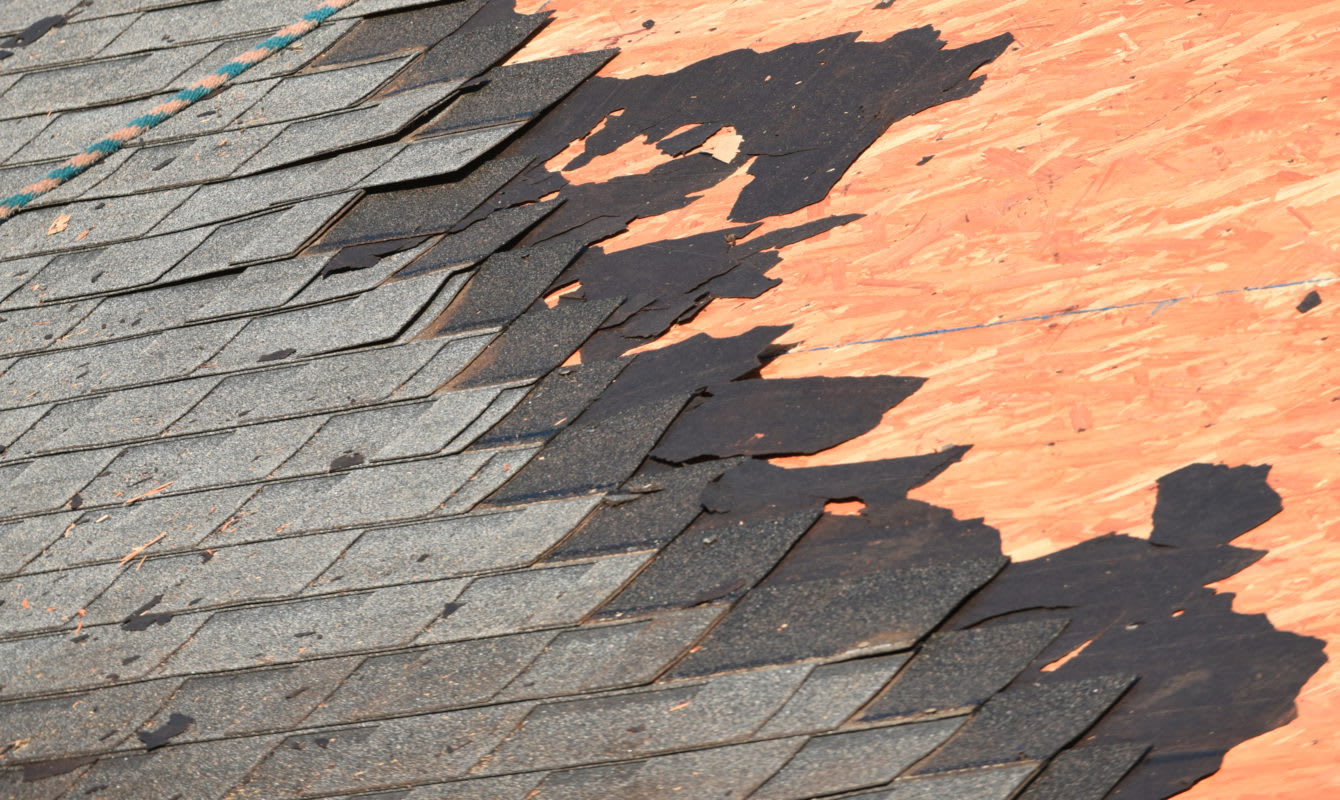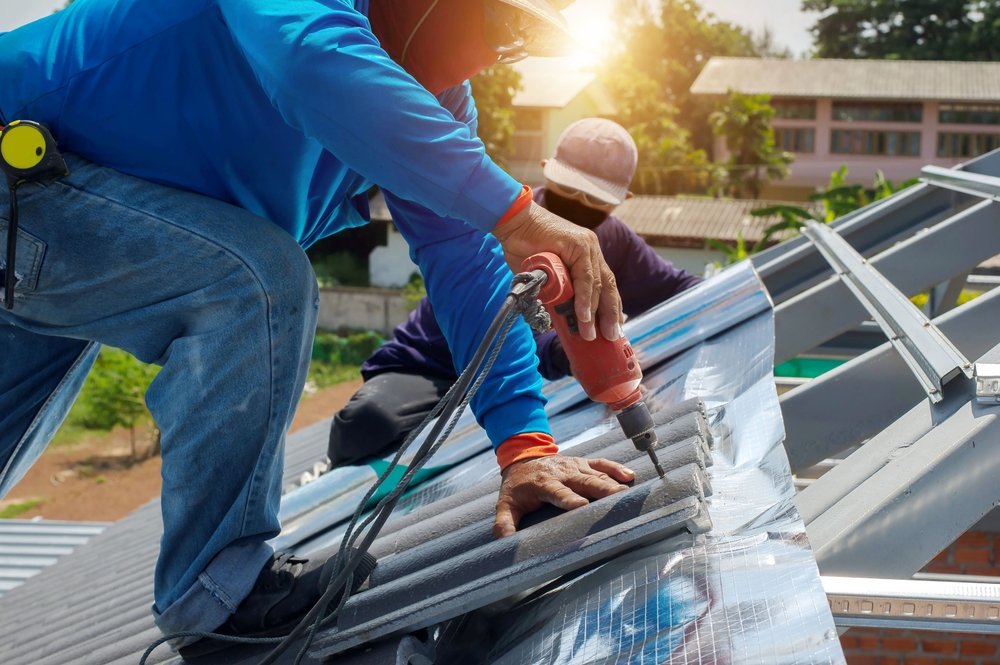Roofing Oahu: Professional Roofer for Your Oahu Building
Roofing Oahu: Professional Roofer for Your Oahu Building
Blog Article
Understanding the Different Kinds Of Roofs: A Comprehensive Guide for Homeowners
With an array of options-- varying from the conventional gable to the contemporary flat-- each kind provides unique benefits and challenges that ought to straighten with the home owner's environmental considerations and particular needs. As we discover the details of various roof kinds, it ends up being evident that one size does not fit all; the appropriate option may stun you.
Saddleback Roof
Saddleback roofs, characterized by their triangular shape, are amongst the most prominent roofing designs as a result of their simplicity and efficiency in shedding water and snow. This design includes two sloping sides that meet at a ridge, permitting reliable water drainage and decreasing the danger of water accumulation. The steep pitch generally connected with gable roofing systems enhances their ability to take care of heavy precipitation, making them suitable for numerous environments.
In addition to their sensible benefits, saddleback roofs use visual versatility. They can be adjusted to various architectural styles, from traditional to modern-day homes. The style can also fit extra attributes such as dormer home windows, which enhance natural light and air flow in the attic area.
Moreover, saddleback roofs supply ample space for insulation, adding to energy performance. Property owners can pick from a range of roof materials, consisting of asphalt shingles, steel, and floor tiles, even more boosting customization choices.
Regardless of their benefits, saddleback roofs may need additional support in locations vulnerable to high winds or hefty snowfall. In general, the saddleback roof stays a favored choice because of its blend of capability, durability, and aesthetic charm.
Apartment Roofs
Flat roofs are commonly recognized for their minimalist style and practical applications, specifically in industrial and commercial setups (oahu roofing). These roof coverings include a straight or virtually horizontal surface, which permits very easy construction and flexible area usage. While they may do not have the visual allure of angled roofs, flat roofings provide many advantages, particularly in metropolitan atmospheres where taking full advantage of space is important
Among the primary benefits of flat roof coverings is their access. House owners can utilize the roof covering area for numerous functions, such as roof yards, balconies, or solar panel installments. Additionally, flat roof coverings are normally much more cost-effective to mount and keep compared to their sloped counterparts, as they need less products and labor.
Nevertheless, flat roofs do present particular challenges. Appropriate drain is important to avoid water merging, which can bring about leaks and architectural damages. Therefore, selecting top quality waterproofing materials and normal examinations are critical for guaranteeing long life. Common products utilized for flat roof coverings include built-up roof covering (BUR), modified bitumen, and single-ply membranes, each offering distinct benefits. Generally, level roofs act as a adaptable and practical choice for several home owners and organizations alike.
Hip Roof Coverings
Hip roofs are characterized by their sloped sides that assemble at the top, developing a ridge. This design stands out from gable roofs, as all 4 sides of a hip roofing incline downwards toward the wall surfaces, supplying a much more stable structure. The angle of the slopes can differ, enabling convenience in building aesthetic appeals and performance.
One of the primary advantages of hip roof coverings is their ability to hold up against heavy winds and negative climate condition. The sloped surface areas enable much better water drainage, lowering the danger of leaks and water damage. In addition, hip roofing systems use increased attic room room, which can be used for storage or perhaps transformed into livable areas.
Nevertheless, building a hip roofing system can be more intricate and expensive than less complex roof covering types, such as gable roof coverings. The extra product and labor involved in creating the slopes and ensuring correct structural integrity can bring about greater expenditures. Regardless of these downsides, many property owners favor hip roofs for their durability, aesthetic allure, and capacity for power effectiveness.
Mansard Roofs
Mansard roof coverings, frequently identified by their unique four-sided layout, feature two these details slopes on each side, with the reduced slope being steeper than the top. This architectural style, originating from France in the 17th century, is not just cosmetically appealing yet Discover More useful, as it optimizes the useful space in the upper floors of a building. The high reduced slope enables for more clearance, making it an optimal choice for lofts or attic rooms, which can be exchanged living areas.
Mansard roofs are defined by their flexibility, suiting various building styles, from typical to modern-day. They can be built with different materials, including asphalt shingles, slate, or steel, offering house owners with a variety of choices to match their budget plans and choices. Furthermore, the design permits the combination of dormer home windows, improving all-natural light and ventilation in the top levels.
Nevertheless, it is vital to think about the prospective disadvantages. Mansard roof coverings might call for even more maintenance due to the intricacy of their style, and their high slopes can be challenging for snow and rainfall runoff. Generally, mansard roofings combine elegance with usefulness, making them a popular choice amongst house owners looking for distinctive building attributes.
Shed Roofing Systems
As property owners progressively seek simpleness and performance in their building styles, lost roofing systems have actually become a preferred option. Defined by a single sloping plane, a shed roof offers a minimalist aesthetic that matches different home designs, from modern to rustic.
One of the main benefits of a shed roofing is its straightforward building and construction, which usually translates to lower labor and material prices. This layout allows for reliable water drain, decreasing the risk of leakages and water damages. In addition, the upright slope supplies enough space for skylights, improving natural light within the inside.
Dropped roofings also use flexibility in terms of usage. They can be properly integrated right into additions, garages, or exterior frameworks like sheds and structures. In addition, this roofing system style can fit various roofing products, consisting of steel, asphalt tiles, and even environment-friendly roofings, straightening with eco-friendly efforts.
Nevertheless, it is important to take into consideration local environment problems, as hefty snow loads may necessitate modifications to the roof's angle or framework. In general, lost roofing systems provide a practical and cosmetically pleasing choice for house owners looking to make best use of her response capability without endangering design.
Conclusion


Gable roof coverings, characterized by their triangular form, are amongst the most prominent roof designs due to their simpleness and efficiency in dropping water and snow. oahu roofing. The high pitch commonly connected with gable roofs boosts their ability to take care of hefty precipitation, making them ideal for different climates
While they might do not have the aesthetic allure of pitched roofs, flat roofings offer countless advantages, especially in metropolitan atmospheres where taking full advantage of area is important.

Report this page